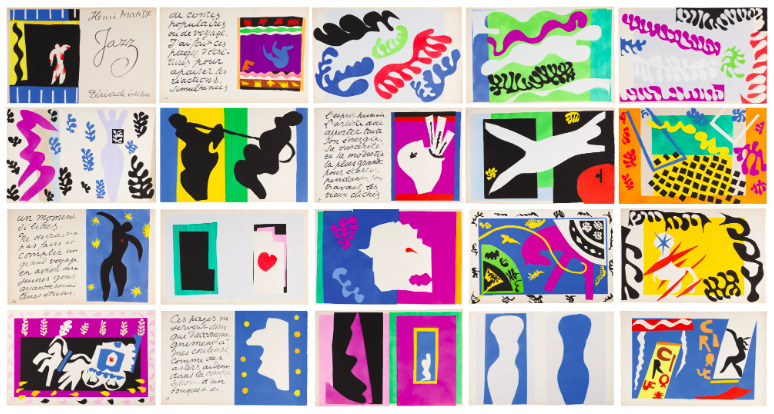
Henri Matisse, a renowned French artist, created the Jazz prints during a period when he faced physical limitations due to poor health. These prints were the result of his desire to continue creating art despite being confined to a bed or wheelchair.
In the early 1940s, Matisse was diagnosed with cancer and underwent a surgery that left him bedridden and unable to paint in his traditional manner. However, this setback did not dampen his creative spirit. Instead, Matisse turned to a new medium that allowed him to express himself—paper cutouts.
The Jazz prints were a result of Matisse’s experimentation with this medium. Using gouache-painted paper cutouts, he created bold and vibrant compositions that showcased his unique artistic vision. Matisse would cut shapes and figures from colored paper and then arrange them into collages. He explored a wide range of subjects, including dancers, circus performers, animals, and abstract forms.
The name “Jazz” was given to this series of prints because Matisse believed that the rhythm and energy in his compositions echoed the vibrancy and spontaneity of jazz music. The prints themselves were not created as traditional prints through the process of etching or engraving, but rather reproduced from Matisse’s original cutout collages. These prints were accompanied by Matisse’s handwritten notes and poetic captions, adding another layer of meaning to the artworks.
Matisse’s Jazz prints are characterized by their bold colours, simplified shapes, and dynamic compositions. The vibrant hues and rhythmic arrangements of the cutouts create a sense of movement and visual harmony. Despite their apparent simplicity, these compositions are rich in visual storytelling and symbolic references.
The process of creating the Jazz prints was a meticulous one. Matisse would arrange and rearrange the cutout shapes until he achieved the desired composition. He would then have the collages photographed, and the images were transferred to plates for reproduction. The final prints were then made through the technique of pochoir, a hand-stenciling process that allowed for the precise replication of Matisse’s vibrant colours and shapes.
The Jazz prints were first published as a portfolio in 1947, consisting of 20 individual prints accompanied by Matisse’s poetic musings. The prints were met with critical acclaim and became highly influential in the art world. They showcased Matisse’s innovative approach to art-making and his ability to create powerful and expressive compositions even in his weakened state.
The Jazz prints not only represent a turning point in Matisse’s artistic practice but also serve as a testament to his resilience and determination to continue creating art in the face of adversity.